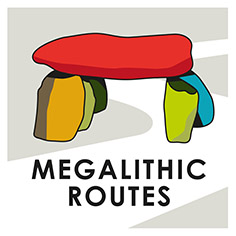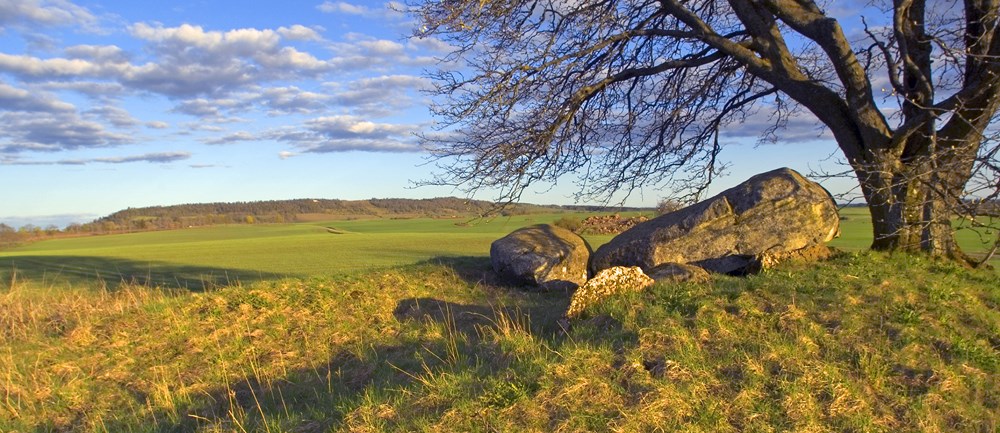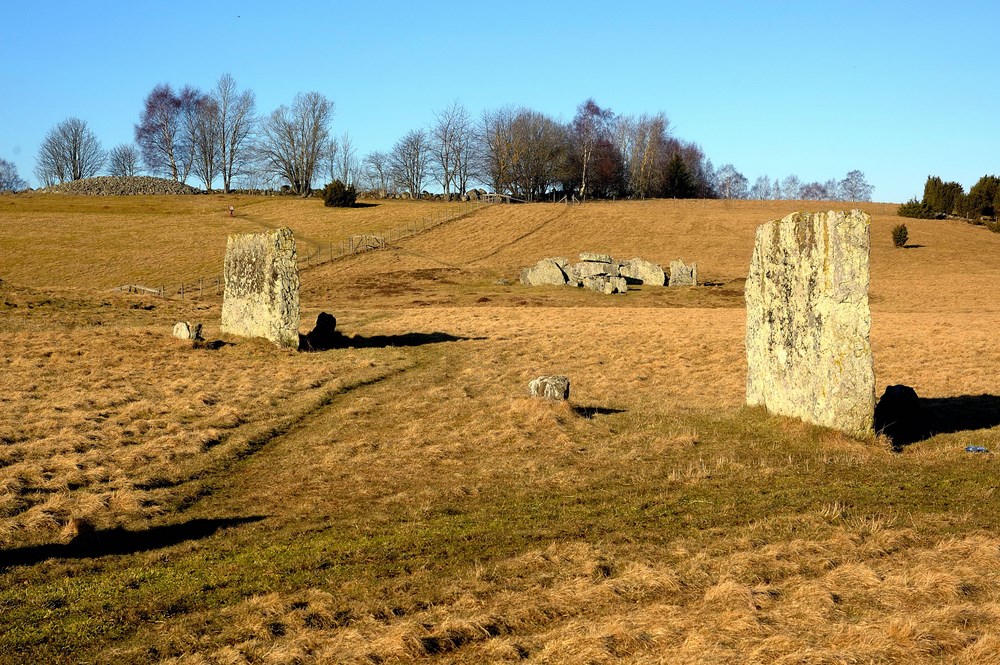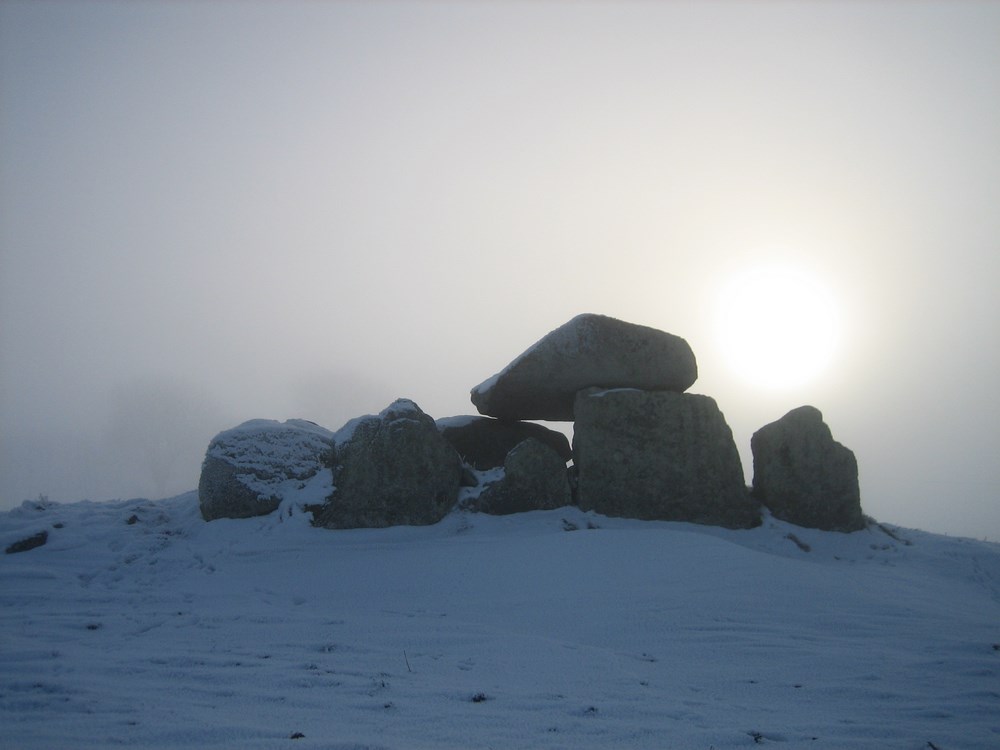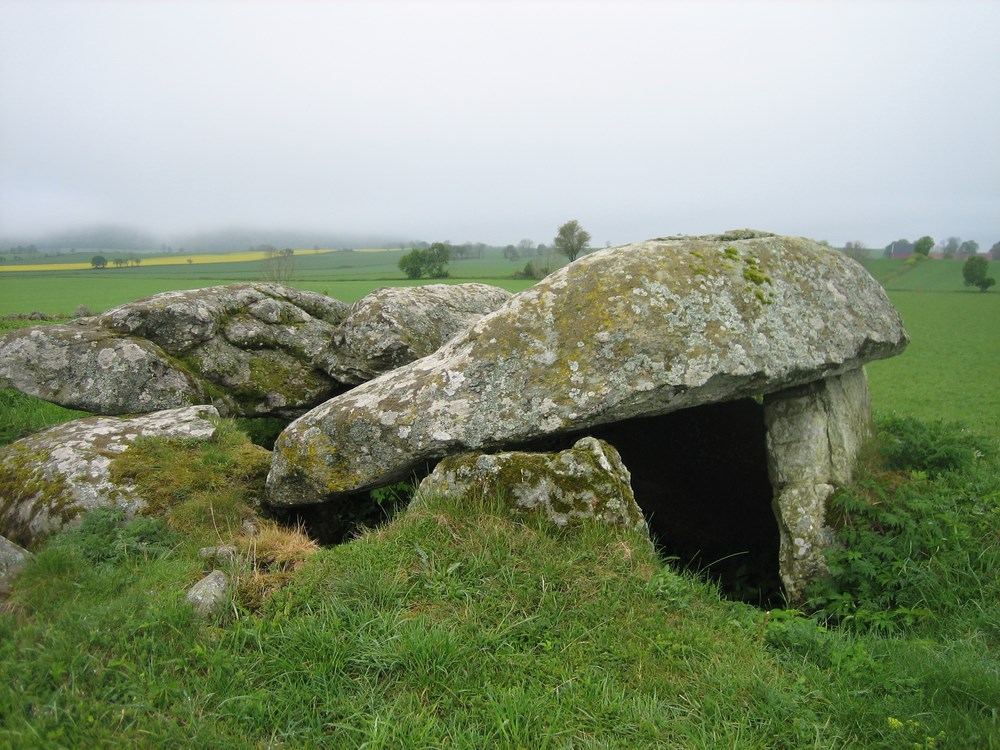Megalith in the region of Falbygden
The region between the two lakes, Vänern and Vättern, in southern Sweden marks the northern border of the of the megalithic culture. Between the two lakes lies Falbygden, a varied landscape with many moors and unique table mountains. Few landscapes are as strongly characterised by the past as Falbygden; among other ancient remains three quarters of all of Sweden’s passage tombs can be found here. In all, about 260 monuments have survived. This makes Falbygden home to one of the largest concentrations of megalithic tombs in northern Europe.
As the ground is quite chalky, skeletal remains more than 5000 years old have been found in the tombs and are extremely well preserved – a good precondition for ongoing research projects by the University of Gothenburg to establish the so-called genetic fingerprint and origin of the population at the time. The Falbygden passage tombs dominate the landscape, but the opposite is also true as the landscape dominates the passage tombs. Falan is a hilly upland, surrounded by the flat-topped table mountains of Mösseberg, Ålleberg, Geumsberget, and Billingen, and there are hilltops of dolerite, limestone plateaux, sandstone, and so on. The relationship between the mountains and the passage graves is obvious. The shape, as well as the ordering of the building material is a copy of nature. The walls are of sedimentary rock whilst most of the capstones are of igneous dolerite. We find the same arrangement in the graves as in the mountains.
The Falbygdens Museum and Megalithic Routes around Falköping
In the surroundings of Falköping, the most important megalithic monuments are (or will be) presented along various tourist routes. A unique hiking route runs through the town, passing megalithic tombs and graves from other times that are still present in the central part of Falköping. Worth an extra trip are the passage tombs at Karleby, Vårkumla, Luttra, and – not to be forgotten – Ekornavallen which is a unique prehistoric site with graves and findings from the Stone to the Iron Age.
In the middle of the town of Falköping lies the archaeologically oriented Falbygdens Museum. Here visitors can find detailed information about Falbygdens rich heritage. The two exhibitions “Ancient times in Falbygden” and “Another Thousand years” makes it possible to experience in words, sounds, and images the history of the area. The exhibition features unique ancient objects such as the skeleton of a 9000-year-old domesticated dog, a Stone Age flute, and a copy of the mighty gold collar from Ålleberg. The “Raspberry Girl” is also exhibited here, a rare European example of a Neolithic body found in a bog. A new addition is the reconstruction of her face.
